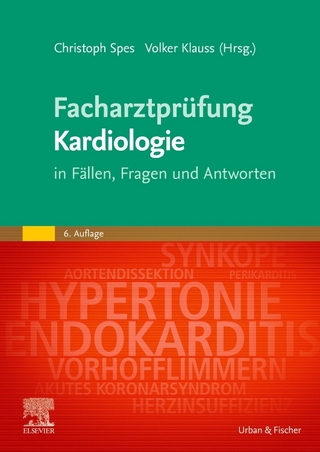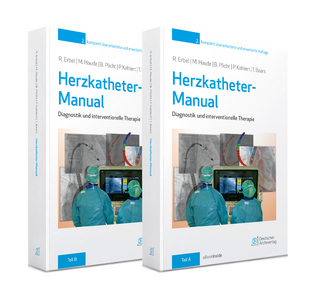
Myocardial Contrast Two-dimensional Echocardiography
Springer (Verlag)
978-94-010-7556-5 (ISBN)
1. Introduction and general background.- 1. Evolution of echo contrast concepts.- 2. Assessment of cardiac structures and flow patterns.- 3. Development of echo contrast agents.- 4. Consideration of echo contrast mechanism and safety.- References.- 2. Development and validation of MC-2DE methodology.- 1. Initial exploration of MC-2DE and its validity.- 2. Characteristics and studies of myocardial echo contrasts.- 3. Echo contrast safety and toxicity.- 4. Transpulmonary echo contrast investigations.- 5. Quantitative MC-2DE methods and their limitations.- 6. MC-2DE measurement of ischemic risk area and infarcts.- 7. Assessment of coronary stenosis and myocardial blood flow.- 8. Physiological studies and miscellaneous MC-2DE applications.- 9. Initial clinical MC-2DE reports.- 10. Potential surgical application of MC-2DE.- References.- 3. Contrast agents for myocardial perfusion studies: Mechanisms, state of the art, and future prospects.- 1. Introduction.- 2. The source of ultrasonic contrast effect.- 3. Physical influences on ultrasonic contrast effect.- 4. Specific agents reported as echocardiographic contrast agents.- 5. The use of high intensity sonication for microbubble creation.- 6. Conclusion.- Acknowledgements.- References.- 4. Significance and selection of contrast solution for myocardial contrast echocardiography.- 1. Introduction.- 2. Current echo contrast media.- 3. Properties of the ECM: Microbubble size, osmolality, viscosity, and stability.- 4. Evaluation of the echo contrast media used so far.- 5. Echo contrast safety and effectiveness.- 6. Some conclusions.- Acknowledgements.- References.- 5. Side effects and potential toxicity of myocardial contrast echo Cardiography.- 1. Introduction.- 2. Possible mechanisms of toxicity.- 3. Animal studies.- 4. Human experience.- 5. Conclusions.- References.- 6. Ischemic ‘risk area’ determination using myocardial contrast two-dimensional echocardiography.- 1. What is the ‘risk area’?.- 2. What is the significance of the ‘risk area’ ?.- 3. A historical perspective to the measurement of ‘risk area’.- 4. Role of MCE is the assessment of ‘risk area’.- 5. The lateral borders of the ‘risk area’.- 6. Summary.- Acknowledgements.- References.- 7. Quantitation of regional myocardial perfusion using myocardial contrast two-dimensional echocardiography.- 1. Coronary blood flow versus nutrient (myocardial) blood flow.- 2. Large microbubbles and blood flow.- 3. Small microbubbles and blood flow.- 4. Summary.- Acknowledgements.- References.- 8. Coronary venous myocardial contrast echocardiography.- 1. The rational of retrograde infusions.- 2. Experimental retrograde MC-2DE models.- 3. Experimental observations.- 4. Suitability and limitations of the retrograde MC-2DE method.- 5. Future retrograde MC-2DE potentials and prospects 148 References.- 9. Assessment of contrast decay half life by MC-2DE: Preliminary clinical experience.- 1. Introduction.- 2. Echocontrast agents.- 3. Registration of myocardial contrast echocardiograms.- 4. Analysis of MC-2DE images.- 5. T50 values derived from MC-2DE.- 6. Safety of MC-2DE.- 7. Reproducibility of T50 measurements.- 8. Clinical applications of T50.- 9. Limitations and future prospects.- References.- 10. Clinical trials with a new myocardial contrast agents.- 1. Introduction.- 2. Qualitative contrast echocardiography in humans.- 3. Quantitative contrast echocardiography in humans.- 4. Future directions.- Acknowledgements.- References.- 11. Clinical evaluation of severity of coronary arterial stenosis by contrast echomyocardiography.- 1.Introduction.- 2. Method.- 3. Results.- 4. Discussion.- 5. Summary.- References.- 12. Clinical applications of myocardial contrast echocardiography.- 1. Introduction.- 2. Myocardial contrast echocardiography in relation to regional myocardial perfusion.- 3. Contrast echocardiography during coronary angioplasty.- 4. Assessment of coronary vascular reserve by myocardial contrast echocardiography.- 5. Safety of myocardial contrast echocardiography in humans.- 6. Limitations.- 7. Perspectives and future directions.- Acknowledgement.- References.- 13. The issue of an intravenous MC-2DE methodology. A typical early study.- Section One: Recapitulation of problems and potentials by the volume-editor Samuel Meerbaum.- Section Two: Evaluation of myocardial echo enhancement by intra venous contrast echomyography in dogs.- Section Three: Present developments, progress and prospects by the volume-editor Samuel Meerbaum.- References.- 14. Current perspective and future prospects.- 1. General MC-2DE capabilities and limitations.- 2. Quantitation of myocardial perfusion.- 3. Efforts aimed at clinical application.- 4. Future prospects.
| Reihe/Serie | Developments in Cardiovascular Medicine ; 99 |
|---|---|
| Zusatzinfo | XIV, 236 p. |
| Verlagsort | Dordrecht |
| Sprache | englisch |
| Maße | 155 x 235 mm |
| Themenwelt | Medizinische Fachgebiete ► Innere Medizin ► Kardiologie / Angiologie |
| ISBN-10 | 94-010-7556-5 / 9401075565 |
| ISBN-13 | 978-94-010-7556-5 / 9789401075565 |
| Zustand | Neuware |
| Haben Sie eine Frage zum Produkt? |
aus dem Bereich


